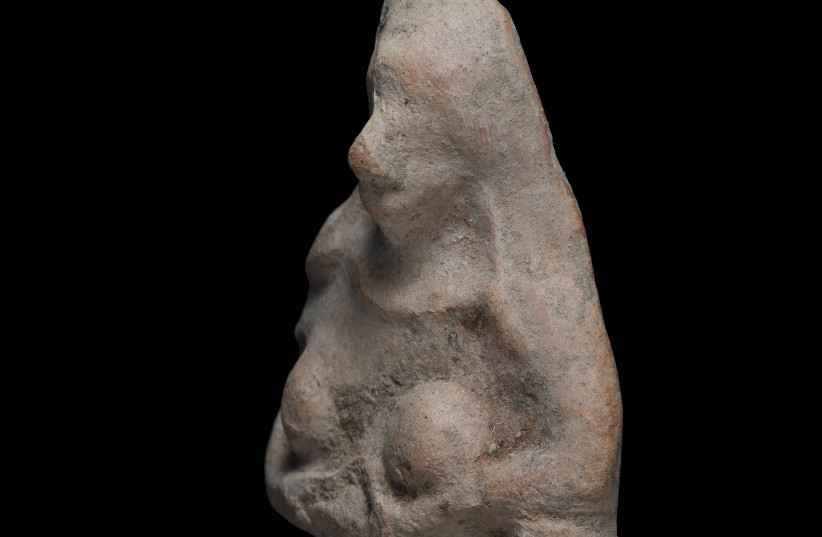 Biblical ‘fertility amulet’ found by 11-year-old in the Negev
Biblical ‘fertility amulet’ found by 11-year-old in the Negev
ROSSELLA TERCATIN
The artifact depicts a stylized bare-breasted woman wearing a scarf with her hands folded under her chest and dates back to some 2,500 years ago.

A child on a family hike in the Negev found a figurine dating back to the biblical period, the Antiquities Authority announced Tuesday.
The artifact depicts a stylized bare-breasted woman wearing a scarf with her hands folded under her chest. It is about 2,500 years old and is from the late First Temple period or the beginning of the Persian period, also known as the “Return to Zion,” the IAA said in a press release. It probably served as an amulet for fertility and protection for infants, it said.
2,500 year old pottery figurine found in the northern Negev (Yevgeny Ostrovsky/Israel Antiquities Authority)
“Pottery figurines of bare-breasted women are known from various periods in Israel, including the First Temple era,” according to Oren Shmueli and Debbie Ben Ami, IAA curators of the Iron Age and Persian periods. “They were common in the home and in everyday life, like the hamsa [hand design] today, and apparently served as amulets to ensure protection, good luck and prosperity.
“We must bear in mind that in antiquity, medical understanding was rudimentary. Infant mortality was very high, and about a third of those born did not survive. There was little understanding of hygiene, and fertility treatment was naturally nonexistent. In the absence of advanced medicine, amulets provided hope and an important way of appealing for aid.”
Fertility gods were very common in ancient cultures. The Bible offers many testimonies to the influence that neighboring populations had on the Israelites.
The pottery figurine, about seven centimeters high and six cm. wide, was spotted by 11-year-old Zvi Ben-David from Beersheba while on a family trip to Nahal Habesor, a trail in the South that follows the Besor River riverbed.
The boy’s mother, a professional tour guide, understood the importance of the find and alerted the IAA.
Only one other similar figurine, also found in the northern Negev, is kept at the National Treasures collection.
“The exemplary citizenship of young Zvi Ben-David will enable us to improve our understanding of cultic practices in biblical times and man’s inherent need for material human personifications,” Shmueli and Ben-Ami were quoted as saying.
Zawartość publikowanych artykułów i materiałów nie reprezentuje poglądów ani opinii Reunion’68,
ani też webmastera Blogu Reunion’68, chyba ze jest to wyraźnie zaznaczone.
Twoje uwagi, linki, własne artykuły lub wiadomości prześlij na adres:
webmaster@reunion68.com
